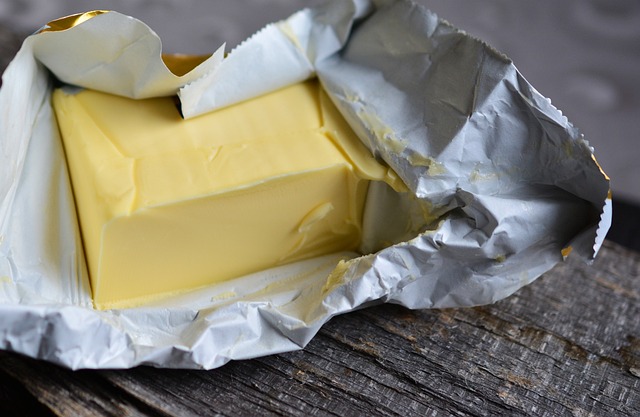Non-Surgical Fat Reduction solutions offer modern, safe alternatives to liposuction for localized weight loss. Using advanced technologies like laser, radiofrequency, and cold therapy, these treatments break down and eliminate fat cells in specific problem areas with minimal downtime. Ideal candidates are adults aged 18-65 with a BMI below 30 who maintain a healthy diet and exercise routine. Consulting a qualified healthcare provider is crucial for assessing individual needs and ensuring safety and effectiveness. Results vary, so thorough research is essential before choosing a reputable clinic.
Struggling with stubborn fat pockets? Discover non-surgical targeted fat loss—a game-changer in beauty routines. This innovative approach offers a safe and effective way to reduce unwanted fat without surgery. The article explores everything from the science behind it to finding the right candidates and ensuring safety. Learn about various techniques, post-treatment care, and how this method fits into your aesthetic journey, providing a promising solution for achieving a slimmer, more sculpted body.
Understanding Non-Surgical Targeted Fat Loss: An Overview

Non-Surgical Targeted Fat Loss, also known as fat reduction solutions, is a cutting-edge approach to achieving localized weight loss without invasive procedures. This method leverages advanced technologies and scientific principles to target specific areas of fat accumulation, offering a safer and more convenient alternative to traditional surgery. Unlike general weight loss programs that focus on broad dietary changes, targeted fat loss zeroes in on problem zones, making it an attractive option for individuals seeking body contouring without the risks associated with surgical interventions.
The process typically involves non-invasive treatments such as laser therapy, radiofrequency, or ultrasound, which gently break down fat cells and stimulate their elimination from the body. These procedures are often combined with lifestyle adjustments like diet and exercise to optimize results. By combining scientific precision with a holistic approach, non-surgical targeted fat loss presents a promising avenue for those striving for improved body aesthetics without undergoing major surgery.
How Does Non-Surgical Fat Reduction Work?

Non-Surgical Fat Reduction solutions have gained popularity as a safe and effective alternative to traditional liposuction. These innovative procedures use advanced technology like laser, radiofrequency, or cold therapy to target and break down fat cells without the need for incisions or general anesthesia. The process typically involves applying external energy sources directly to the problem areas, stimulating the body’s natural metabolic processes to eliminate excess fat. This method is often preferred by individuals seeking a non-invasive approach to contouring their bodies, as it offers quicker recovery times and minimal downtime compared to surgical alternatives.
The key advantage lies in its specificity; these treatments are designed to target stubborn fat deposits in problem areas like the abdomen, thighs, or buttocks, providing more precise results than general body treatments. Moreover, many non-surgical fat reduction procedures have additional benefits, such as skin tightening effects, improving overall skin texture and tone. With a growing demand for quick, effective, and safe beauty solutions, non-invasive fat reduction techniques are at the forefront of modern aesthetics.
Benefits and Advantages Over Traditional Methods

Non-Surgical Targeted Fat Loss offers a multitude of benefits and advantages over traditional methods. One of the key advantages is its minimal invasiveness, eliminating the need for incisions or extensive recovery periods often associated with surgical procedures. This approach allows individuals to resume their normal activities faster, making it an appealing option for those seeking a quick return to their daily routines.
Furthermore, targeted fat loss techniques provide precision in treating specific problem areas, enabling practitioners to address stubborn fat deposits effectively. Unlike general weight loss programs that may not target problematic zones, these modern solutions are tailored to individual needs. By focusing on specific fat reduction, patients can achieve the desired contour changes and body transformations they seek without the risks or side effects often linked to more invasive procedures.
Suitable Candidates for Non-Invasive Fat Loss Treatments

Fat Reduction Solutions for Suitable Candidates
Non-invasive fat loss treatments are an attractive option for individuals looking to target specific areas of body fat without surgery. These procedures are typically suitable for people who have tried conventional weight loss methods but still struggle with persistent fat deposits in certain zones such as the abdomen, thighs, or buttocks. Ideal candidates often maintain a healthy diet and regular exercise routine but may have genetic predispositions that affect fat distribution.
Several factors determine if someone is a good candidate for non-surgical fat reduction. Demographics play a role; generally, healthy adults between 18 and 65 years old are considered suitable. Body Mass Index (BMI) guidelines also apply, with most treatments best suited for individuals with a BMI below 30. Additionally, treating areas with firm, well-defined fat pockets yields better results. Consulting with a qualified healthcare provider or dermatologist is crucial to determine the best course of action and assess individual needs based on medical history and current health status.
Common Techniques in Non-Surgical Fat Reduction

Non-Surgical Fat Reduction solutions have gained popularity due to their effectiveness and minimal downtime. Several techniques are currently available, each with its unique approach to shrinking fat cells. One common method involves the use of targeted laser technology, which heats up fat cells, causing them to break down and be eliminated by the body’s natural processes. Another popular choice is cryolipolysis, also known as cooling fat removal, where cold temperatures are used to freeze and destroy specific fat cells.
Ultrasonic fat reduction is another non-invasive procedure that uses sound waves to target and disrupt fat cells. This method encourages the body to naturally process and eliminate the broken-down fats. Each of these techniques offers a safe and effective way to achieve desired fat reduction without the need for surgery, catering to individuals seeking discreet and convenient fat loss solutions.
Safety and Effectiveness: What You Need to Know

When exploring fat reduction solutions, safety and effectiveness should be your top priorities. Non-surgical targeted fat loss procedures, also known as body contouring or lipo-like treatments, have gained popularity for their purported ability to eliminate stubborn fat without invasive surgery. However, not all methods are created equal, and it’s crucial to understand the potential risks and benefits before committing to any procedure.
Reputable clinics offering these services should adhere to stringent safety standards and employ state-of-the-art technology. Look for qualified healthcare professionals who can provide detailed explanations of the treatment process, expected outcomes, and possible side effects. Additionally, understanding that fat loss results may vary from person to person is essential. Thorough research and consulting with experts will empower you to make an informed decision, ensuring both safety and satisfaction with your chosen fat reduction solution.
Recovery Process and Post-Treatment Care

After the non-surgical targeted fat loss treatment, recovery is swift and usually involves minimal downtime. Most individuals can resume their normal activities within a day or two, though strenuous exercise should be avoided for a week to allow the body to heal. Post-treatment care includes keeping the treated area clean and applying recommended creams or gels to enhance results. Staying hydrated and maintaining a healthy diet are crucial for optimal recovery and maximizing the benefits of your fat reduction solutions.
It’s important to note that individual experiences may vary, and it’s advisable to follow the specific aftercare instructions provided by your healthcare professional. Remember that while these treatments offer effective fat reduction, they are not a cure-all, and maintaining results requires consistent lifestyle choices including regular exercise and a balanced diet.
Integrating Non-Surgical Fat Loss into Your Beauty Routine

